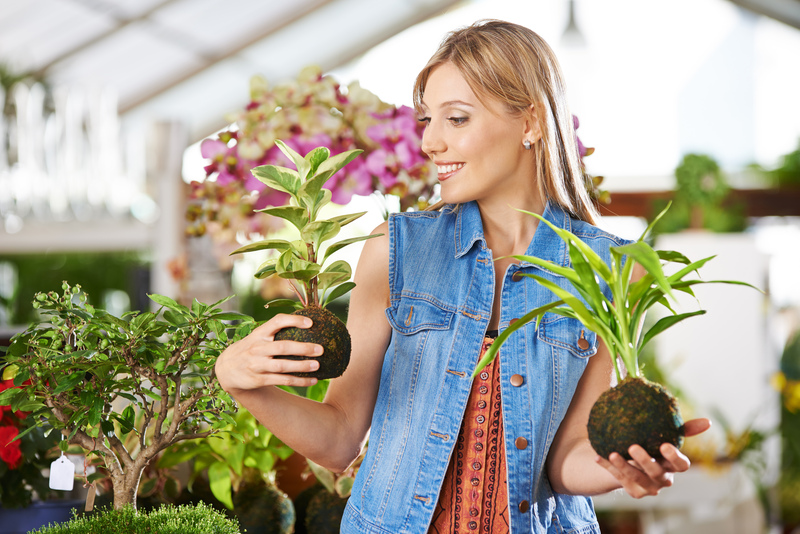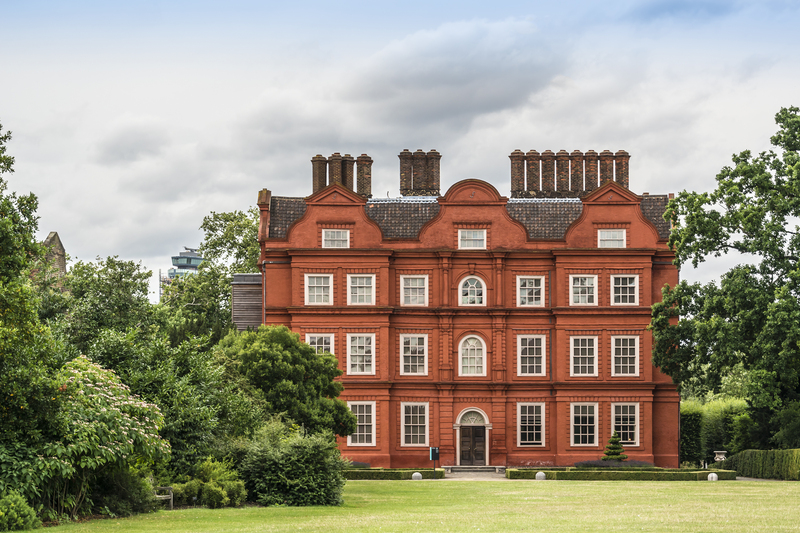Unlock the Secrets to Growing Tropical Plants in the UK Climate
Have you ever dreamed of turning your UK garden into a lush, exotic oasis brimming with vibrant foliage and dazzling blooms? Tropical plants bring an unmissable wow-factor with their striking shapes and colors. The good news: with some know-how, it is possible to grow tropical plants in the UK climate! Dive into this guide and discover expert tips, practical advice, and top plant choices to unleash the tropics in your own backyard.
Why Grow Tropical Plants in the UK?
The UK is not naturally a tropical haven, yet keen gardeners across the nation are successfully cultivating palm trees, banana plants, canna lilies, gingers, and bamboos amidst their roses and daffodils. Why opt for tropical garden plants?
- Vivid Colour and Exotic Flair: Tropical plants infuse a sense of drama and vibrancy impossible to achieve with temperate species alone.
- Architectural Impact: The bold leaves and remarkable forms make tropical plants ideal structural elements for modern or jungle-inspired gardens.
- Wildlife Attraction: Some tropical blooms attract pollinators and beneficial wildlife.
The trick lies in adapting tropical gardening techniques to the UK's temperate climate.

Understanding the UK Climate: Friend or Foe?
The UK experiences a largely temperate oceanic climate. Winters are mild compared to continental Europe but include plenty of frost, wind, and unpredictable weather, while summers seldom reach tropical temperatures. Challenges for tropical gardening in the UK include:
- Cool winters with potential for frost and occasional snow
- Limited sunlight hours during winter months
- High rainfall, especially in autumn and winter
- Heavy clay or poorly drained soils in many regions
However, the UK's mild coastal areas and urban microclimates can support a wider range of exotic species than you might expect--with the right strategies!
Top Tropical Plants for UK Gardens
Some tropical and sub-tropical plants are surprisingly tolerant of the UK's climate, while others need to be nurtured as annuals or brought indoors for winter. Here are some fantastic options for growing tropical plants successfully in the UK:
The Palm Family
- Trachycarpus fortunei (Windmill Palm) - One of the hardiest palms, tolerates frosts and snow with minimal protection.
- Chamaerops humilis (European Fan Palm) - Compact, architectural, and cold-hardy.
Bananas
- Musa basjoo (Hardy Banana) - Grows fast, and with proper mulching, survives most UK winters.
- Ensete ventricosum (Abyssinian Banana) - Needs winter protection; huge leaves create instant impact.
Tropical Flowering Plants
- Canna indica (Indian Shot) - Bold foliage and stunning flowers; can be lifted for winter or protected with mulch.
- Hedychium (Ginger Lily) - Exotic blooms and scent, overwinter in a frost-free spot or thick mulch in mild regions.
- Colocasia (Elephant Ears) - Dramatic, heart-shaped leaves, suitable for pots or as pond marginals.
Bamboo and Grasses
- Phyllostachys aurea (Golden Bamboo) - Creates jungle vibes instantly; choose clumping species to prevent spreading.
- Miscanthus sinensis (Maiden Grass) - Elegant, tall grass with a tropical look and hardy nature.
Other Foliage Stars
- Fatsia japonica (Japanese Aralia) - Large, glossy leaves and high tolerance for shade.
- Hosta varieties - Broad-leaved and shade-loving, perfect for lush underplanting.
Key Strategies for Growing Tropical Garden Plants in the UK
Unlocking the secrets of successful tropical plant growth in the UK involves more than choosing the right species. It's about providing optimal conditions and protection throughout the year.
1. Creating Microclimates
- Shelter from Wind: Erect fences, trellises, or plant evergreen hedges to shield tender plants from cold winds.
- Increase Sunlight: Place tropical plants against south or west-facing walls to harness extra warmth and radiant heat.
- Urban Heat Islands: Use the extra warmth from patios, paving, or brickwork to your advantage.
2. Soil Preparation
- Improve Drainage: Most tropicals hate waterlogged soils. Mix in grit, organic compost, and raised beds to facilitate free drainage.
- Mulch Generously: Thick mulch layers insulate roots in winter and conserve moisture through summer.
3. Feeding and Watering
- Feed Regularly: Use a balanced or high-potassium fertilizer during the growing season (spring and summer) to encourage lush growth and blooms.
- Water Consistently: Tropical plants thrive with steady moisture, so water deeply in hot spells, and use mulch to reduce water loss.
4. Winter Protection Tactics
- Insulate Roots: Pile on straw, bark chips, or compost around the base of tender plants by late autumn.
- Wrap Stems and Crowns: Use horticultural fleece or bubblewrap for bananas and palms for added insulation.
- Lift and Store: Some tropicals (like dahlias, cannas) can be dug up and overwintered in a frost-free greenhouse or shed.
- Move Potted Plants Indoors: Large tubs can be rolled inside a conservatory or porch during the coldest months.
5. Pest and Disease Management
- Watch Out for Snails and Slugs: Many tender-leaved exotics attract these pests--use eco-friendly deterrents or traps.
- Check for Red Spider Mite: Especially under glass, maintaining humidity and vigilance is key.
- Promote Good Airflow: Crowded, humid conditions can foster fungal diseases; space plants appropriately.
Designing a Tropical Paradise in the UK
It's not just about the species you grow--it's also how you arrange them. Design tips for a UK tropical garden:
- Layer Textures and Heights: Combine tall bananas and palms with lush underplanting using hostas, ferns, and gingers.
- Create Backdrops: Use evergreen hedges or bamboo screens for privacy and to evoke a jungle-like enclosure.
- Add Water Features: Small ponds or pebble fountains enhance the exotic ambiance and support humidity.
- Use Pots and Planters: Move tender specimens around for best effect or to shelter them come winter.
Frequently Asked Questions about Growing Tropical Plants in the UK Climate
Can I grow tropical plants outside all year in the UK?
Some tropical and subtropical plants--like hardy palms, bananas, and bamboos--can be grown outdoors year-round in much of the UK, especially in southern coastal regions. Others need winter protection or to be grown in containers and brought inside during cold spells.
What's the best way to protect tropical plants in winter?
Mulching, wrapping, and lifting tender rhizomes or bulbs are reliable methods. Using horticultural fleece, bubblewrap, or home-made insulated covers helps, as does choosing sheltered south-facing sites.
What soil do tropical plants like?
Most thrive in rich, well-draining soils high in organic matter. Good drainage is essential to prevent root rot in cool, wet UK winters. Amend heavy clay with compost, grit, or leafmould.
Can tropical plants be grown in pots in the UK?
Absolutely! Exotic plants in containers can be moved to ideal positions through the year and overwintered indoors when needed.
Do tropical gardens attract wildlife?
Yes, many flowering tropicals attract bees, butterflies, and birds. Water features further boost wildlife value.
Advanced Tips for Thriving Exotic Gardens in the UK
- Experiment with Microclimates: Even in cooler regions, small sun traps and sheltered courtyards can grow surprising exotics.
- Choose Established Plants: Bigger specimens have more resilience to cold snaps than tiny plugs or seedlings.
- Try Hardy Exotics Hybrids: Many nurseries now offer cold-tolerant hybrids of exotic species for gardens in marginal areas.
- Utilize Greenhouses or Conservatories: Install heated propagation mats for delicate seedlings or display tropicals under glass over winter.
- Companion Planting: Underplant bananas with low-growing ferns or heucheras to create a lush, jungle floor effect.

Troubleshooting: Common Problems with Tropical Plants in the UK
- Frost Damage: Blackened leaves or collapsed stems--remove affected foliage and improve protection next season.
- Root Rot: Caused by poor drainage--amend the soil or try raised beds and containers for sensitive plants.
- Yellow Leaves: May indicate cold stress, root issues, or nutrient deficiencies. Feed with a balanced fertilizer and ensure good drainage.
- Lack of Flowers: Often due to insufficient sunlight or feeding; move to a sunnier position and feed regularly during the growing season.
Conclusion: Unlock Your Own Exotic Garden Oasis
With the right plant choices, microclimate management, and winter protection, you really can enjoy thriving tropical plants in the UK. Your garden can become a lush, leafy slice of paradise with a little planning and passion. Whether you seek a dramatic focal point or a full-on jungle retreat, start experimenting and watch your outdoor space transform into an exotic haven--no matter the postcode!
Dare to defy the British weather and bring the secrets of tropical horticulture home. With this comprehensive guide, lush, exotic beauty is within reach for every UK gardener.